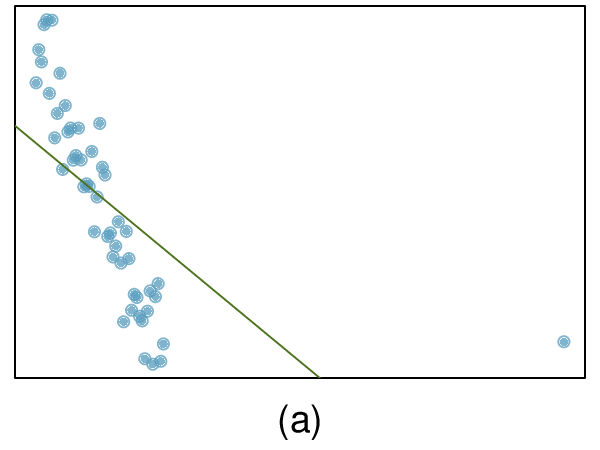You might recall from an algebra course that slope is change in \(y\) over change in \(x\text{.}\) Here, both \(x\) and \(y\) are in thousands of dollars. So if \(x\) is one unit or one thousand dollars higher, the line will predict that \(y\) will change by 0.0431 thousand dollars. In other words, for each additional thousand dollars of family income, on average, students receive 0.0431 thousand, or $43.10 less in gift aid. Note that a higher family income corresponds to less aid because the slope is negative.























